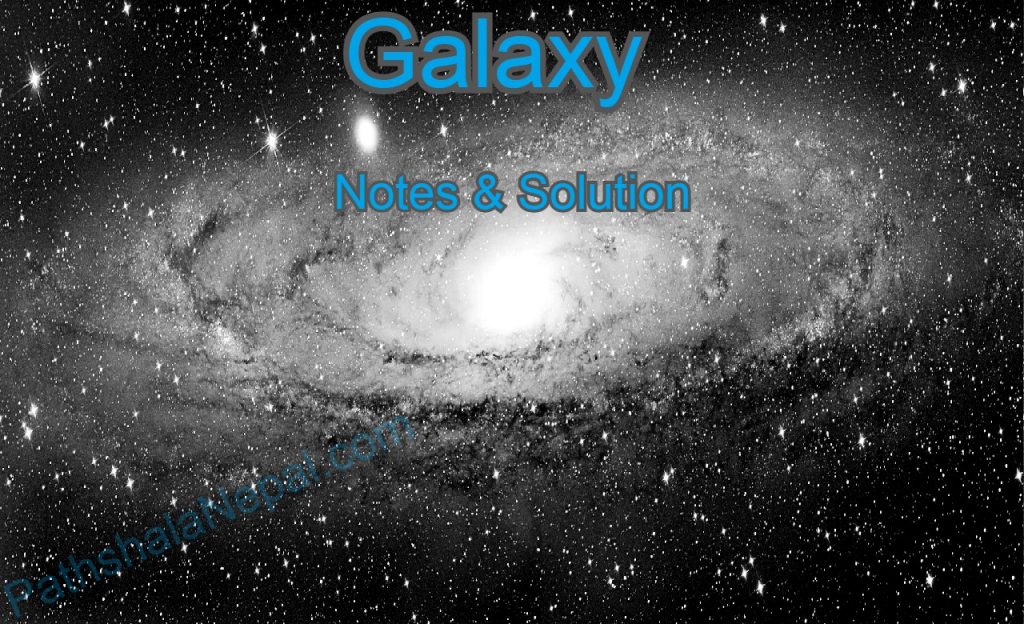A vast collection of billions of star, gases and dust particles in the universe is called galaxy. There are more than 1011 galaxies each contains approximately 1010stars. The galaxies are found scattering all around the universe. For example, Milky Way galaxy, Andromeda etc. our solar system lies in the Milky Way galaxy.
Each galaxy has a galactic center. Galactic center a central point of the galaxy around which all stars and constellations move. The time taken by the sun to complete one revolution around the galactic center is called one cosmic year. It is about 200 million years.
Types of galaxies
Elliptical galaxies
The galaxy whose shape ranges from round to flattened disc is called elliptical galaxies. They ae bright at the center and gradually become fainter towards the outer region.
Spiral galaxies
They are shaped like disc with spherical bright central region around which, winding or spiral arms are present. Andromeda and Milky way are spiral galaxy. A great number of dust particles and gaseous clouds re seen in this galaxy.
Irregular galaxies
- They have no fixed shape and smaller than other galaxies.
Scientists discovered the distances of galaxies by studying infrared rays, radio waves, visible rays and X-rays emitted from them.
- A vast collection of billions of star, gases and dust particles in the universe is called galaxy.
- Galactic center a central point of the galaxy around which all stars and constellations move.
- The time taken by the sun to complete one revolution around the galactic center is called one cosmic year.
- The galaxy whose shape ranges from round to flattened disc is called elliptical galaxies.
This note contains Solved Questions, Formulas, and related notes.
Click Here to Read Original Version (Interactive Mode)

